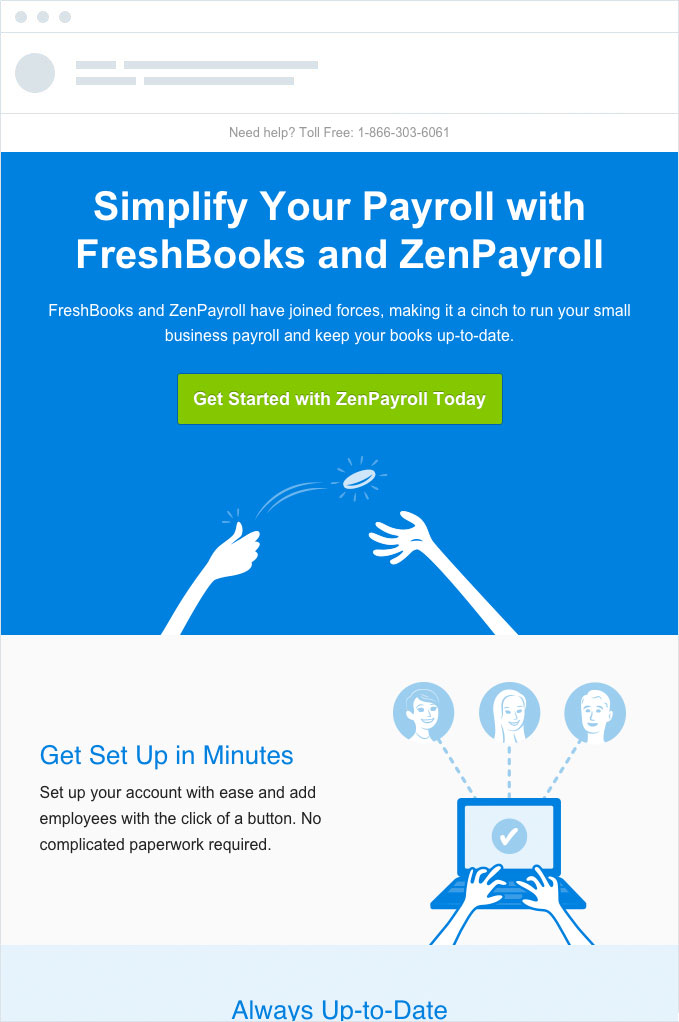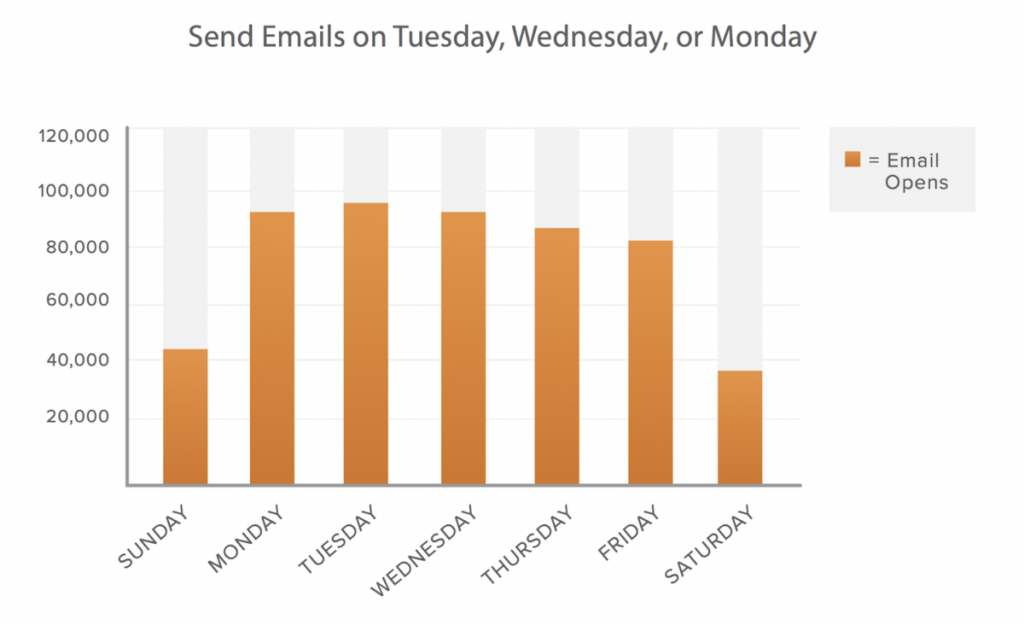Email is still one of the most powerful forms of marketing, bringing in the highest ROI out of any marketing activity. With stats like this backing it up, it’s difficult to ignore.
But if you’re sitting there thinking back to your past campaigns that haven’t yielded the results you’d hoped for, you might be wondering how email can help you sell more and become more successful.
If this is the case, chances are you’re not making the most of the capabilities available to you through email – and that’s okay. However, sometimes it can just be a simple change that makes all the difference.
To help you out, we’ve collected five small tweaks you can make to improve the success of your email marketing campaigns and to generate more sales.
1. Add a Call-to-Action
Answer me this:
How are your subscribers supposed to know you want them to buy your latest product or sign up for the early-bird discount to a new service if you don’t tell them that?
Turns out one of the most important email marketing tips to increase sales is to add an irresistible call-to-action.
If you’re not adding a call-to-action to your emails, you might be missing out on a ton of conversions. In fact, research has shown that emails with a single call-to-action increased clicks by 371% and boosted sales by a whopping 1617% – those numbers are hard to pay no attention to.
The goal of your call-to-action is to encourage readers to act, so you ideally want to have a powerful action-focused word in there. Try these:
- Sign up
- Download
- Grab your discount
- Save today
- Get in touch
- Buy now
- Get started

If you’re really keen to increase sales with email, you can personalize your calls-to-action based on the subscriber’s past behavior and interaction with your brand. This could improve their performance by 202%.
Every marketer must learn how to write a great call to action.
2. Achieve personalization through segmentation
Consumers crave personalization today.
In a world where everything seems to be done behind the anonymity of a screen, people want to feel like they’re interacting with a real human being when they engage with your brand.
Segmentation is a great way to make sure subscribers only receive emails that are relevant and interesting to them.
You can easily segment your master list into subsections based on indicators like:
- Location
- Age
- Length of subscription
- Whether a purchase has been made or not
- Interests
- Past interactions with the brand
Once you have a better idea of why someone is on your list and what their relationship with your brand is like, you can serve them more relevant emails which will, in turn, increase their chances of buying from you.
3. Send more emails than you think
If you’re scared of “annoying” your subscribers, you’re not alone.
In fact, so many brands scrimp on how many emails they send to their customers because they don’t want to overwhelm them. And, while it’s true that you shouldn’t be sending five emails a day (because no one has time for that when we receive an average of 90 emails a day), you can definitely afford to send more than one email about your products and services.
You see, emails can easily get missed or someone might be reading them on the fly and forget about your message.
On top of that, most consumers need around seven touchpoints with a brand before they even consider buying from them, and every email counts towards that. In fact, follow up emails tend to perform better than one-off emails.
When you’re planning out your email campaigns, really think about the message you want to send out and the goal of those campaigns. You can then break down the bigger goal into smaller goals, where each email hits on one of those mini-goals.
Quick tip: Each email you send should have just one aim. Any more than that and you’ll end up confusing subscribers who might then go into option paralysis.
4. Optimize timing to boost sales
Timing is everything when it comes to email marketing.
An email sent in the middle of the night might get lost amongst the pile of incoming emails the following morning, while an email sent at just the right time will get the attention it deserves.

Research shows that the best time to send an email is on a weekday – and preferably a Monday, Tuesday, or Wednesday at that.
These are the times most people are glued to their inboxes and there’s a high chance your email will get read and digested.
When it comes to specific times to send your emails, that will vary depending on who your audience are and what industry you’re in.
It’s worth experimenting with a few different times to determine when your emails get the most opens, click-throughs, and conversions, and then create a regular, consistent time to send using that data. For example, if you’re target audience are business people who work 9-5 jobs, sending them emails on a weekend evening isn’t going to do you any favors.
Instead, you should take the time to figure out the email habits of your audience and use that information to schedule your campaigns to go out at the right time. You can increase sales with email when you pay attention to what first appears to be small stuff.
5. Build trust and authority
Subscribers are on your email list for a reason. Maybe they signed up to receive a valuable download or they liked what they saw on your blog and wanted more of that good stuff.
Either way, these people are expecting to hear from you, and landing directly in their sacred inboxes is a great way to build on the relationship you already have with them.
Think of this as a chance to get to know them, for them to get to know you, and for you to position yourself as the answer to their potential problems.
To build trust and authority you can:
- Share valuable and educational content – this can be your own content, as well as the content of others. Keep your audience in mind when you’re choosing what to send and really consider how that content is going to help them begin to solve the problems they have.
- Ask questions to open a two-way dialogue – starting a conversation makes you human, which really stands out in this internet-crazy age. At the end of your emails, fire off a quick question and encourage your subscribers to reply and share their story to start building relationships.
- Share your expertise through case studies and testimonials – people are more likely to listen to their peers (especially if their peers have managed to solve a problem they still have), and scattering testimonials throughout your emails will not only tap into subscriber’s love of recommendations, but it will also show that you can do exactly what you say you do.
- Send consistent emails – by regularly sending out emails at the same time on the same day, subscribers will come to rely on you and expect you in their inboxes (and, more often that not, will even start to look forward to seeing your emails).
Get more sales with email
Email marketing can be incredibly powerful when it’s done right.
If you’re currently not seeing the results you want from your campaigns, try tweaking a few things here and there to see if they make a difference.
Adding in calls-to-action, segmenting your list, optimizing timing, and building trust are all quick and easy things you can do to generate more sales through your emails.

